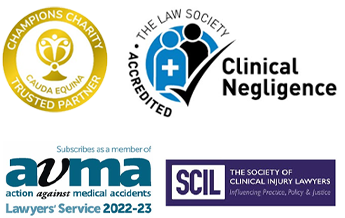
Sepsis is more common than suffering a heart attack and kills more people than any cancer – yet few people have heard of it.
In December 2016, Health Secretary, Jeremy Hunt, launched a campaign to raise awareness of Sepsis, which claims the lives of 37,000 per year in England.
Mr Hunt said, “we need to get far better at spotting it across the NHS”, adding, “By raising awareness and improving clinical practice we will save lives in the fight against this horrible illness.”
The campaign is aimed at parents of children; from newborn to four years old. The strategy includes millions of leaflets being delivered to hospitals and GP surgeries across the country, which detail the signs and symptoms of Sepsis.
Parents have been told to visit A&E immediately or call 999 if their child has mottled, bluish or pale skin, is very lethargic or difficult to wake, feels abnormally cold to touch, is breathing very fast, has a rash that does not fade when you press it or has a fit or convulsion
What is Sepsis?
Sepsis is swift and deadly. Severe cases, known as septic shock, have a 50% mortality rate and can increase vulnerability to future infection. Septic shock can also cause complications if the patient survives. Small blood clots can form throughout the body which block the flow of blood and oxygen to vital organs. This increases the risk of organ failure and tissue death (gangrene).
Sepsis is always caused by an infection; pneumonia, urinary infections (UTIs), skin infections including cellulitis and infections in the stomach – appendicitis for example.
When a person cuts their skin, the area surrounding it becomes swollen, red and slightly warm. This is a sign of a healthy immune system response releasing white blood cells to the site of the injury to kill off the bacteria causing the infection.
The white blood cells and platelets form blood clots in the tissues around the cut.
Blood vessels swell to allow more blood to flow, and they become leaky, allowing infection-fighting cells to get out of the blood and into the tissues where they are needed.
This causes inflammation, which appears to us as the red, warm swelling.
However, this system can overreact and go into overdrive, attacking the body, potentially causing organ failure and septic shock.
Bacteria, viruses, fungi, and parasites can all trigger Sepsis – bacteria being the most dangerous.
Most at risk are the very young, the elderly and those suffering from a compromised immune system (for example diabetics or AIDs sufferers).
The signs and symptoms of Sepsis
Red flag symptoms of Sepsis include the following:
- weakness
- loss of appetite
- fever and chills
- thirst
- difficult or rapid breathing
- rapid heart rate
- low blood pressure
- low urine output
If a person is suffering these symptoms and they are thought to have suffered an infection – pneumonia, abdominal infection, urinary infection, or a wound – Sepsis is a likely cause.
The three stages of Sepsis
Sepsis affects the body in three distinct stages:
Stage 1
An infection invades the body, causing the immune system to jump into action. The germs and toxins leave the original site of the infection and enter into the bloodstream. This then triggers the inflammatory response known as SIRS (systemic inflammatory response syndrome).
Stage 2
The organs begin to deteriorate, leading to failure.
Stage 3
Multiple organs cease to function, leading to cardio-circulatory failure. Blood pressure plummets suddenly. This stage is known as septic shock.
What to do if you suspect Sepsis
If you suspect Sepsis, it is vital you treat it as a medical emergency. Call 999 without delay. The chances of the patient’s survival greatly depend on getting medical treatment fast.
Preventing Sepsis
Given that Sepsis is always caused by an infection, preventing infection occurring is the easiest way to avoid contracting Sepsis. Steps you can take to prevent Sepsis include:
- Vaccinate your children. There are now effective vaccines for small children that lead to immunity to major pneumococcus pathogens which can cause pneumonia, middle ear infections, sinusitis, meningitis – all of which can lead to Sepsis. Vaccinating small children leads to a greater mechanism known as “herd immunity”, disrupting chains of infection and resulting in fewer pneumococcus infections even among those not vaccinated.
- Only use antibiotics when absolutely necessary. The excessive use of antibiotics in outpatient care over the past several years has led to a drastic increase in antibiotic-resistant bacteria.
- Practice good hygiene and wound care. Wash your hands before touching an open wound. Treat wounds with clean, but not soapy water. Apply antibiotic cream if required and dress the wound to protect it from dirt. Change the dressing regularly.
- Watch for signs of infection: redness around the wound, skin around the wound warm to touch, increased pain, and/or discharge from the wound.
At Glynns Solicitors we have the expertise required to successfully act for patients who have suffered harm or loss due to botched cosmetic procedures. Please call free on 0800 234 3300 (or from a mobile 01275 334030) or complete our Online Enquiry Form.
Share Article With:

|

|

|

|

|

|




